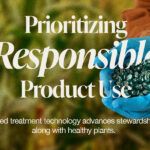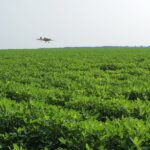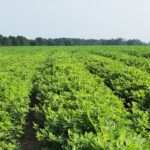Atrazine Is the All-Star of Agriculture
Many growers rely on atrazine, a herbicide supported by thousands of scientific studies, as a mainstay of their crop production practices.

For more than 50 years, U.S. corn, sorghum and sugar cane growers have depended on atrazine herbicide to produce food sustainably. They trust that its safety and efficacy are well documented, as are its environmental, economic and production benefits.
In fact, atrazine is one of the most closely examined herbicides in the world. “This herbicide has gone through a tremendous amount of scientific testing, both with regard to managing its risks and measuring its benefits,” says Jay Vroom, president and CEO of CropLife America. “I doubt there is any compound used in agriculture—or anywhere else in society—that has been more thoroughly evaluated on its presence in surface and groundwater and its potential effects on wildlife.”
Toxicologist Timothy Pastoor, Ph.D., who spent much of his career at Syngenta studying atrazine, agrees. “When I talk about the science behind atrazine, I talk about the more than 7,000 studies that support the registration, which is far more than any other active ingredient on the market,” he says. “Atrazine is inexpensive, and it works. It’s the all-star of agriculture.”
Atrazine Advantages
All of that research has brought to light atrazine’s many benefits. For example, without atrazine, crop yields would potentially diminish, making U.S. growers less competitive compared with other global producers.
“If you significantly reduce yields, you’ll likely drive up production acreage,” says David Bridges, Ph.D., president of Abraham Baldwin Agricultural College. “Well, there’s not a lot more acreage out there that’s prime farmland, so what do you do? You put marginal acreage that is currently in conservation programs—protecting streams and wildlife habitat—into production, which has negative consequences for the country as a whole.” Research shows that using atrazine helps keep an average of 513,000 acres in a noncrop scenario, allowing for more biodiversity on this acreage.
On farmed acres, atrazine helps reduce soil erosion by enabling no-till farming and conservation tillage. “Atrazine gives growers residual weed control, so they’re not having to do deep plowing every year, reducing soil and pesticide runoff,” says Dennis Kelly, head of state affairs at Syngenta. “Without atrazine, the fields may not be no-till any longer, and that’s going to decrease water quality due to increased sediments, especially in sensitive watersheds.”
According to studies, some 3 million dump trucks worth of soil are kept in place each year because of atrazine. Less plowing also means less petroleum burned, which means less carbon dioxide emitted.
Atrazine is highly selective and inhibits photosynthesis in weeds, while corn is very tolerant. According to Bridges, “It tends to make other corn herbicide products even better, leading to more than 60 prepackaged mixtures with other herbicides in the market.
Farmers know that when they apply a product containing atrazine—of which there are more than 60—they’re going to get the broad-scale weed control they’re looking for.
Economics Upsides, Production Pluses
Atrazine is crucial economically, too. According to studies, the use of atrazine supports 85,000 jobs across the ag industry. It also means a boost of more than 900 million bushels of corn output each year.
Without atrazine in their toolboxes, growers would feel the financial implications quickly. “It makes a $34 to $48 positive difference per acre for a corn grower,” says Bridges. “When you’re talking about farmers with a couple thousand acres, that big difference in weed control and yield protection results in a large increase in their bottom lines.”
As one of the few herbicide modes of action available to growers, atrazine offers another benefit to growers, notes Ethan Mathews, director of public policy for the National Corn Growers Association: “It’s one of the last lines of defense we have against weeds that are resistant to other herbicides.”
It’s, therefore, not surprising that growers and herbicide manufacturers alike often turn to atrazine for more effective weed control. It’s frequently sold in combination with newer active ingredients because it makes those products work better. “Other active ingredients might not have the span of weed coverage that’s necessary for the farmer; the addition of atrazine gives the product formulation the span of activity farmers are looking for,” Pastoor says. “Farmers know that when they apply a product containing atrazine—of which there are more than 60—they’re going to get the broad-scale weed control they’re looking for.”
Strong Grower Support
Given atrazine’s central role in the production of corn, sorghum and sugar cane, it’s understandable that concerns were raised last June when the Environmental Protection Agency (EPA) released an unfavorable preliminary draft ecological risk assessment on the herbicide. In response, the scientific and agriculture community submitted hundreds of thousands of comments in support of the product.
“The retailer and grower response and support were amazing,” Kelly says. “We believe that once EPA reviews the overwhelming evidence on the safety of atrazine, it will make changes to its assessment and farmers will be able to continue to use atrazine.”
Although EPA’s public comment period for that draft has concluded, the agency’s review process is ongoing. Next, EPA will review the provided information, amend the draft report as appropriate, and hold a Scientific Advisory Panel (SAP) meeting. Then the agency will publish a preliminary reregistration decision and ask for further public comment.
In addition to all the public comments, EPA will consider the volume of data that atrazine has on its side. “It’s one of the best-studied, most extensively regulated molecules on the planet,” Pastoor says. “Thousands of scientific studies have demonstrated that, when used properly at the labeled rate, atrazine has not, will not and, in fact, cannot adversely affect human health.”























